“Heritage is our legacy from the past, what we live with today, and what we pass on to future generations.” –UNESCO World Heritage Center

Since 1972, UNESCO has designated sites throughout the world, both natural and man-made, as World Heritage Sites, in an effort to help preserve and protect “cultural and natural heritage around the world considered to be of outstanding value to humanity.”
For years, Italy led as the country with the most designations in the world, until recently, when China caught up. Each country contains 55 World Heritage sites, with another 41 sites on the tentative list for Italy.
Found among these worldwide heritage treasures are works of art, including the United States’ Statue of Liberty, architecture, such as India’s Taj Mahal, and even natural wonders, like Australia’s Great Barrier Reef.
Sometimes, entire cities are granted World Heritage status, for their historic and cultural significance, with many Italian cities one would expect to find the classic travel itinerary designated UNESCO World Heritage sites. The historic centers of Rome, Florence, Naples. Venice and its lagoons. Cinque Terre. The Amalfi Coast.

A handful of other Italian cities, rich in heritage, history and beauty also made the UNESCO World Heritage list, some you may have heard of and others not, but you may want to put them all on your travel wish list!
Northern Italy
Portovenere
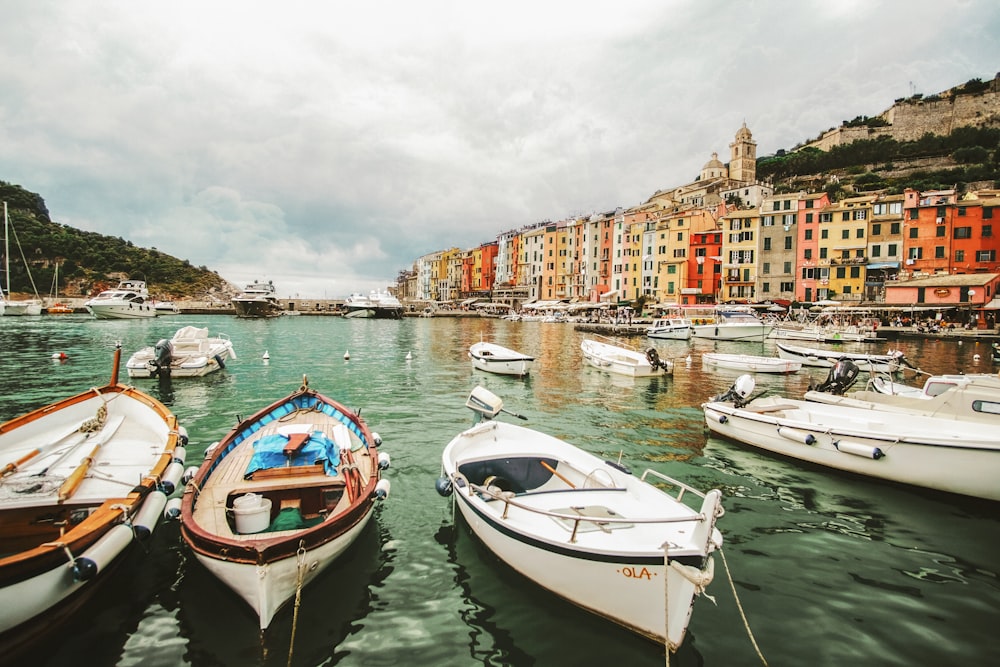
Located on the picturesque Ligurian coast on the west side of the country, Portovenere is about an hour’s drive south of Cinque Terre. Like Cinque Terre, Portovenere boasts the characteristically vibrant buildings, but may not always suffer the same crowding as the five towns comprising Cinque Terre.
It sits on a point of land surrounded by the Tyrrhenian Sea. The body of water on its eastern side is known as the Gulf of Poets, as this area was a favorite of famous wordsmiths across the centuries, including Lord Byron, Percy Bysshe and Mary Shelley, D. H. Lawrence, Virginia Woolf, even Petrarch in much earlier times.
UNESCO recognizes Portovenere as a treasure because of it’s significance as a commercial and cultural center dating to Roman times, with archaeological remains surviving in the area. The name itself, translated as Port of Venus, backs up the notion that the town was named for the Roman goddess Venus, and the local temple dedicated to her that once stood on one of Portovenere’s jagged cliffs jutting into the sea, where the Church of St. Peter stands today.
Not to be forgotten are nearby islands of Palmaria, Tino and Tinetto, called noteworthy by UNESCO “not only for their natural beauty but also for the many remains of early monastic establishments that they contain.”
World Heritage Site since 1997
Verona
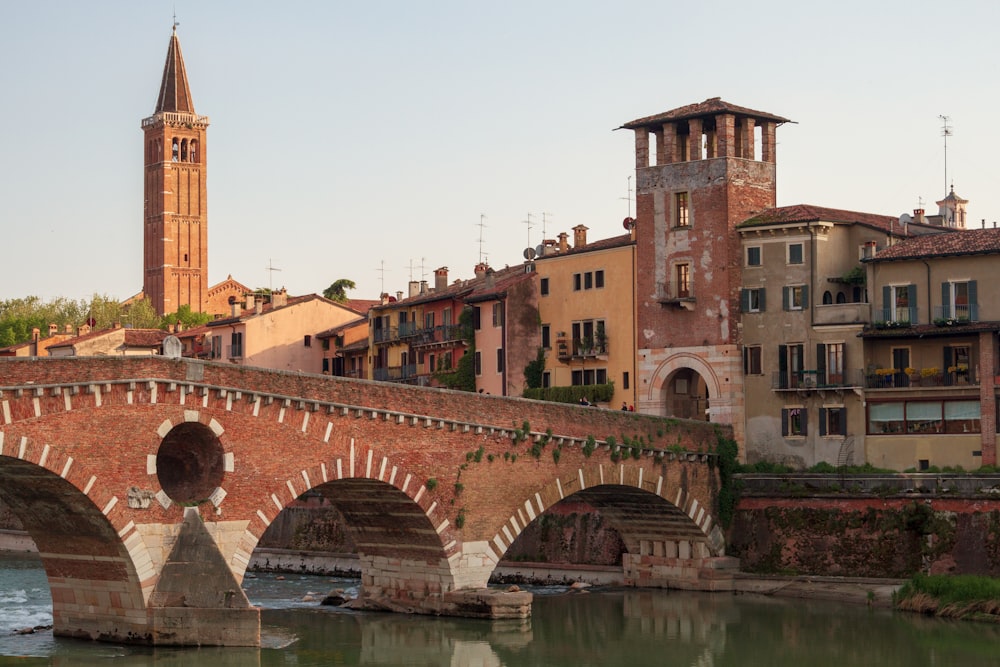
Proud and picturesque Verona sits along the Adige river in northern Italy, nearly equidistant between Milan and Venice, in a region known as the Veneto. A city of 265,000 people, Verona is easily accessible by train from many of Italy’s highly visited cities, including Milan, Florence and Venice. Verona was a stronghold for centuries, but it is more of a household name today due to its La Casa di Giulietta (Juliet’s house) and her balcony, both of Romeo and Juliet fame. In fact, Shakespeare set three of his play in Verona: Romeo and Juliet, The Two Gentlemen of Verona, The Taming of the Shrew.
Records show that Verona existed as a settlement as early at 550 BC, and became a Roman colony in the first century BC. After being conquered several times (including by Charlemagne) Verona came to be ruled by the Scaligeri family in the 1200s. The city experienced a couple of centuries of peace and prosperity, and hosted some heavy hitters of Italian history (Petrarch, Giotto and Dante), but eventually fell under Venetian rule in the 15th century. That changed in 1797 when Napoleon came through town, and Verona was ultimately turned over to Austria. In the 1860s, Verona came under Italian rule once again when all of Italy was unified.
UNESCO recognizes Verona as culturally significant for a few specific reasons, which are easy to spot as a visitor. “Verona has preserved a remarkable number of monuments from antiquity, the medieval and Renaissance periods, and represents an outstanding example of a military stronghold…Verona is an outstanding example of a town that has developed progressively and uninterruptedly over 2,000 years, incorporating artistic elements of the highest quality from each succeeding period.”
One of those monuments includes the ancient Roman arena, a mini-me of Rome’s Colosseum, still serving the people of Verona today as a venue for opera performances, concerts and festivals.
World Heritage Site since 2000
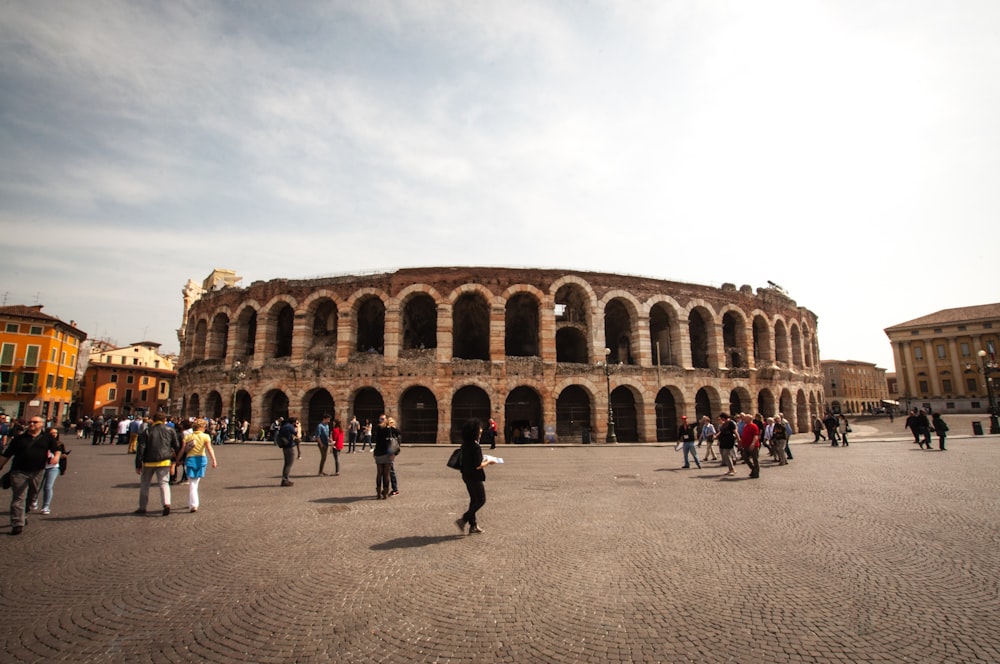
Vicenza

Vicenza sits between Verona and Venice in Italy’s Veneto region. Despite it’s proximity to Venice, it’s not on the typical travel itinerary, but perhaps that’s part of Vicenza’s charm.
Vicenza has ancient roots, founded in the 2nd century B.C., and, centuries later, from the 15th to 18th centuries, flourished as part of Venice’s republic. UNESCO particularly recognizes Vicenza for the work of influential architect Andrea Palladio, whose designs and buildings from the 1500s give Vicenza an ancient Roman feel.
“The work of Andrea Palladio (1508–80), based on a detailed study of classical Roman architecture, gives the city its unique appearance,” writes UNESCO. “Palladio’s urban buildings, as well as his villas, scattered throughout the Veneto region, had a decisive influence on the development of architecture. His work inspired a distinct architectural style known as Palladian, which spread to England and other European countries, and also to North America.”
Today’s travel writers call Vicenza “fantastic”, and “one of the best destinations in Europe for a city break.”
World Heritage Site since 1994
Ferrara
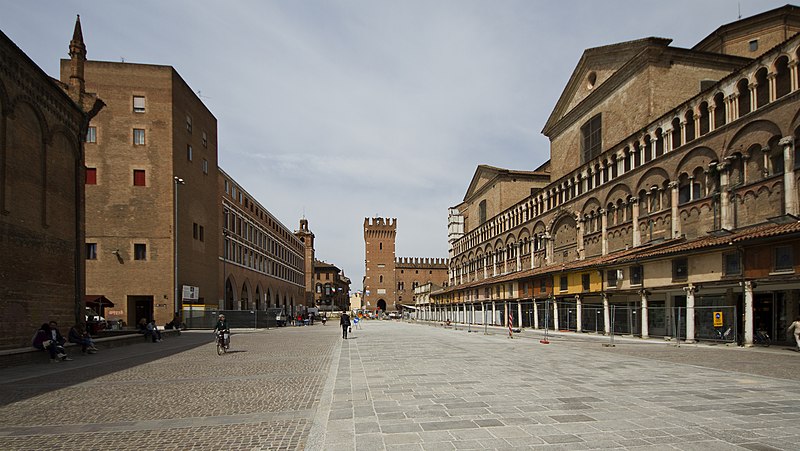
Ferrara takes us south of Vicenza, between Venice and Bologna in the Emilia-Romagna region. This Renaissance city was shaped by its longtime ruling Este family, which you can get to know better in the imposing medieval Este Castle, open to visitors today.
The city’s official site calls Ferrara “one of the culturally most important Italian Renaissance city states,” and, in its Renaissance height, one of Europe’s “capitals of culture, arts, politics, gastronomy, in addition to being a reference point for artists, poets and minstrels.”
UNESCO agrees, recognizing it as a heritage site for being an “intellectual and artistic center that attracted the greatest minds of the Italian Renaissance in the 15th and 16th centuries,” summoned to Ferrara at the invitation (or possibly the request) of the ruling family.
Ferrara is also notable for its early and effective city planning. “The humanist concept of the ‘ideal city’ came to life here in the neighborhoods built from 1492 onwards by Biagio Rossetti according to the new principles of perspective,” continues UNESCO. “This project marked the birth of modern town planning and influenced its subsequent development.”
A walkable city with easy train access to popular travel cities such as Bologna, Venice, and Florence, Ferrara may be one of Italy’s best kept Renaissance secrets.
World Heritage Site since 1995
Tuscan Towns
San Gimignano
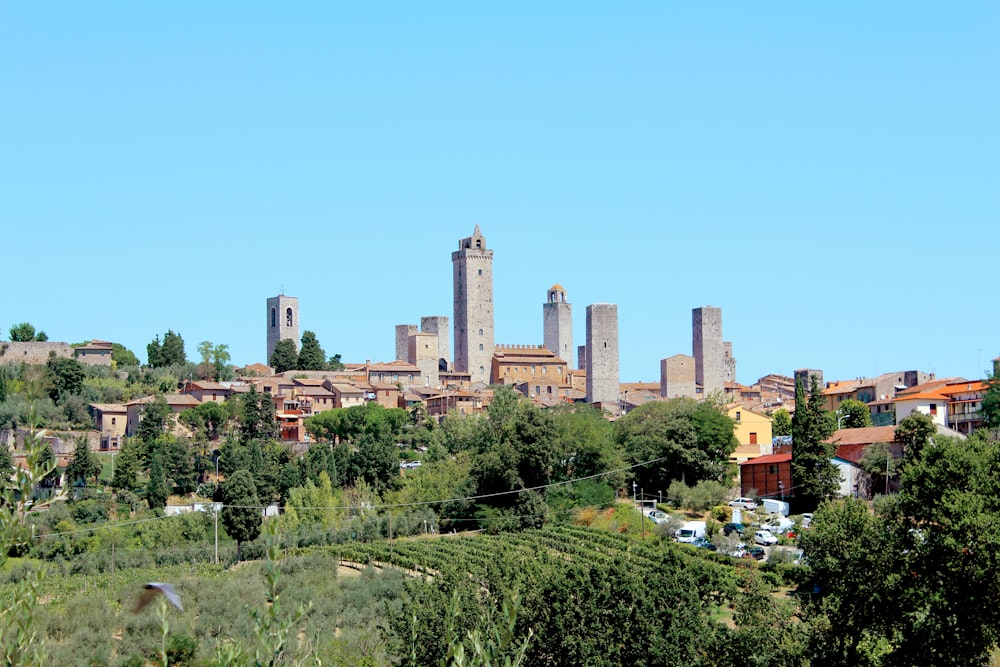
The next four places are all found in the Italian region of Tuscany, and more specifically, in the province of Siena. The northernmost of these UNESCO cities featured here is San Gimignano, nicknamed “medieval Manhattan” for its abundance of medieval-era towers still standing guard over town. Of the approximately 72 fortified tower-houses built between the 11th and 13th centuries, amazingly, 14 remain.
Located about 50 km south of Florence, “San Gimi” is exquisite in its crumbly, aged perfection. The 13th century walls embrace the city with power and protection, while the centro storico centers around roomy Piazza della Cisterna, and its ancient well.
“San Gimignano delle belle Torri (San Gimignano of the beautiful towers) served as an important relay point for pilgrims travelling to or from Rome on the Via Francigena,” notes UNESCO. The via Francigena is an ancient road, still traversable today, that led from Apuglia in southern Italy, through Rome and then north into France.
“The patrician families who controlled the town built around 72 tower-houses (some as high as 50 m) as symbols of their wealth and power. Although only 14 have survived, San Gimignano has retained its feudal atmosphere and appearance. The town also has several masterpieces of 14th- and 15th-century Italian art.”
If you are planning a tour of Tuscany’s hill towns, save a few hours to explore San Gimignano.
World Heritage Site since 1990
Siena
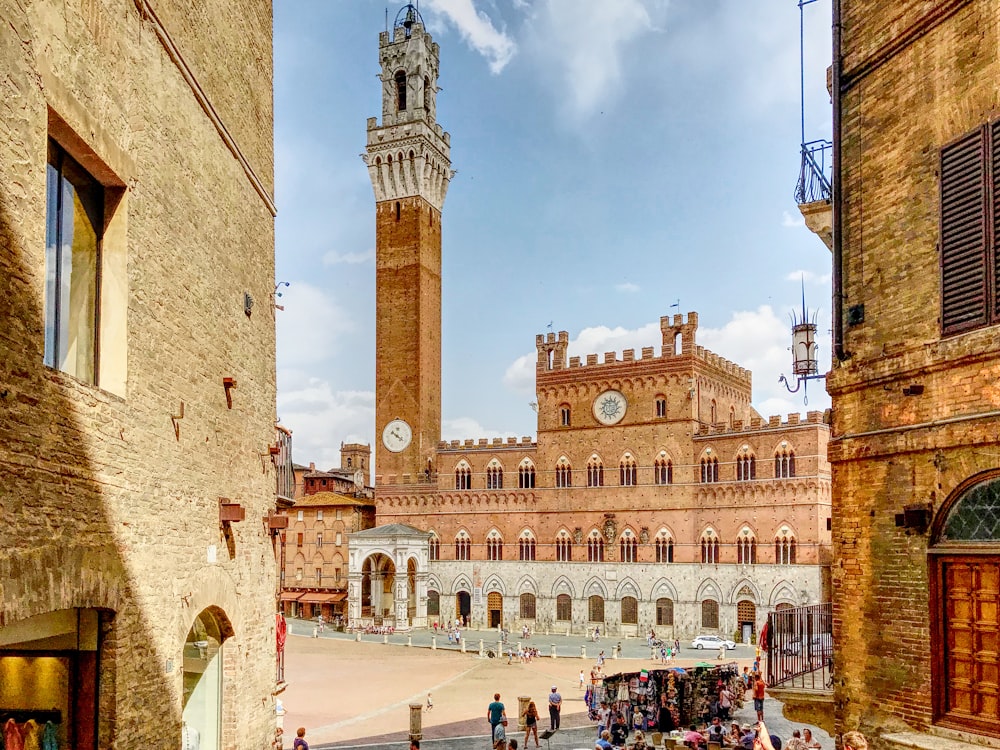
About 40 km south of San Gimignano is Siena, the largest of the Tuscan towns featured here. Visiting Siena, like no other place I’ve experienced in Italy, is to step into the Middle Ages. Rick Steves calls Siena “an architectural time warp,” and calls it his favorite place to revel in medieval Italy.
Siena was a political powerhouse in the 14th century, strong enough to rival other mighty Italian cities of the time, including Florence and Venice. Siena’s center is found at the sprawling Piazza del Campo, with the city’s 17 contrade (neighborhoods) winding out from there. Siena’s famous palio — a horserace held twice a year on July 2 and August 16 — pits contrada against contrada in a friendly but intense competition which first began in 1656.
Here’s what UNESCO has to say: “Siena is the embodiment of a medieval city. Its inhabitants pursued their rivalry with Florence right into the area of urban planning. Throughout the centuries, they preserved their city’s Gothic appearance, acquired between the 12th and 15th centuries. During this period the work of Duccio, the Lorenzetti brothers and Simone Martini was to influence the course of Italian and, more broadly, European art. The whole city of Siena, built around the Piazza del Campo, was devised as a work of art that blends into the surrounding landscape.”
Not to be forgotten is one of Siena’s most notable residents: Saint Catherine of Siena, who, along with Saint Francis of Assisi, watches over Italy as the country’s patron saint.
World Heritage Site since 1995
Pienza and Val d’Orcia

Traveling south of Siena about 55 km bring you to Pienza, in the stunning valley of Val d’Orcia. Pienza is the tiniest of the Tuscan towns featured here, with a population of around 1200, but it hosts thousands of tourists annually.
What are they coming to see? A gem of a Renaissance town which served as the summer home of Pope Pius II in the mid 1400s, and the beautiful examples of architecture from the time, including the central piazza (Piazza Pio II), the cathedral, and a couple of well preserved palazzi in town.
“Pienza is the only Renaissance town centre in Italy to have survived the centuries perfectly intact,” says writer Serena Puosi of Visit Tuscany. And UNESCO notes that it was in Pienza that “Renaissance town-planning concepts were first put into practice.” It remains today as a beautifully-preserved example of a town from this historic time.
Pint-size Pienza makes a lovely stop to a day or weekend trip which could also include nearby Montepulciano and Montalcino, producers each of their own take on exquisite Tuscan wines.
Pienza: World Heritage Site since 1996
Pienza is nestled in the sprawling and stunning Val d’Orcia, a classic snapshot of what one might picture when imaging the Tuscany’s rural expanse. In reality, it’s like something out of a fairy tale.

I love that the entire valley is a UNESCO treasure: “The landscape’s distinctive aesthetics, flat chalk plains out of which rise almost conical hills with fortified settlements on top, inspired many artists. Their images have come to exemplify the beauty of well-managed Renaissance agricultural landscapes.” Val d’Orcia’s cultural significance includes not only the rolling landscape, but also the “towns and villages; farmhouses; and the Roman Via Francigena and its associated abbeys, inns, shrines, bridges” which dot the 151,200 acres of landscape.
Val d’Orcia: World Heritage Site since 2004
East of Tuscany
Urbino

The walled city of Urbino is found in central Italy’s Marche region. From Pienza, it’s a bit of a drive northeast, about 160 km. If you were starting from Florence, it’s about the same distance nearly due east. One of Urbino’s most famous sons is the prolific Renaissance artist Raffaello Sanzio da Urbino — Raphael — who died young but made a significant impact during his lifetime and beyond.
Travel writer Ishita Sood calls Urbino something “right out of a medieval history book,” and names several reasons why a visit to this town is in order, including its historical importance, its beauty, the absence of crowds, and the joy of getting lost in its hillside streets.
UNESCO recognizes Urbino as a cultural hub in the 15th century, with artists from Italy and across Europe flocking to the town. Urbino is recognized for retaining its Renaissance essence to this day, and for serving as “a pinnacle of Renaissance art and architecture, harmoniously adapted to its physical site and to its medieval precursor in an exceptional manner.”
Ciao Stacy! I have a list of all the UNESCO sites in Italia and I cross them off as I visit them. I still have a long way to go! Ciao, Cristina
A great list to work your way through! I love seeing the UNESCO sites too, it adds even more magic to already magical places! Un abbraccio. 🙂